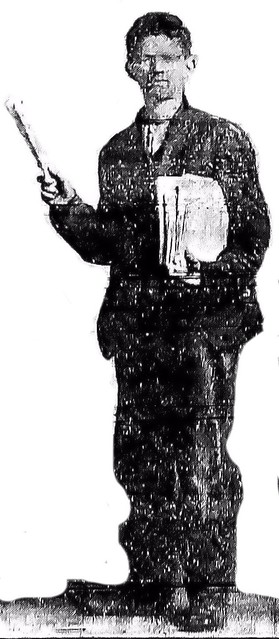In Joplin’s early history, at any one time there were at least two city newspapers, if not more, fighting for the attention of Joplin’s residents. Crucial to this battle for attention spans, were the foot soldiers of the papers, the newsboys. We have previously covered Joplin’s oldest newsboy, and today we bring you three photographs of newboys who belonged to the Joplin News Herald at the turn of the century. The three boys photographed below were the top three winners in a contest to sell the most newspapers in a two week period. The winner was ten year old Allen Harris, who lived at 411 Pennsylvannia Ave and was described as “the happiest boy in Joplin.” Reportedly, there was no ill will against Harris, who was the youngest contestant, and had loss two fingers to a dynamite cap explosion the previous fall. Harris sold 580 papers to win. Second place went to ‘newsie’ Shiloh Patton, who sold 579 papers, and third place went to Harry Bacon, who sold 561. For his victory, Harris won a brand new watch and his photo in the paper.



